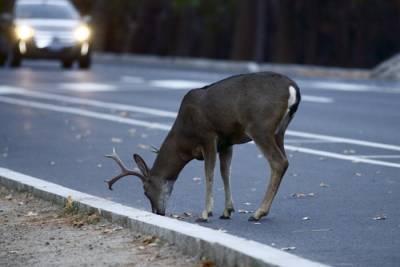
The 16th annual State Farm deer-vehicle collision study, which combined totals between July 1, 2017, and June 30, 2018, found that there were 1.33 million of these accidents, nationwide. The study then ranked the top 10 states for deer-related auto accidents, and Wisconsin came in fourth on the list.
In 2017, the state ranked fifth, so the study indicates that accidents involving wildlife in Wisconsin are on an upward trend. In an article published in the Milwaukee Journal Sentinel this past fall, Police Chief, Peter Hoell, noted that the state is having at least one deer involved accident per night.
While wildlife accidents do typically decline from January to April, the Journal Sentinel article presented data showing that approximately 1, 000 accidents are still reported per month, even as deer season ends. Due to this, drivers throughout the state are encouraged to practice diligence while driving to decrease their risk of experiencing an auto accident with wildlife.
How Do You Avoid Wildlife-Related Auto Accidents?
While you can’t prevent wildlife from crossing the road, there are some ways to avoid being in a wildlife-related accident. Here are a few:
1. Slow Down
In many of the areas where the deer population is dense, there will be warning signs. It is important to slow down in these areas, especially around dawn, and when the sun starts to go down (usually between the hours of 6 p.m. and 9 p.m.), which is when they are the most active.
2. Be Aware
There may be deer crossing the roads in areas that are not marked, so it is still important to always be aware on the road, particularly during the times of the day mentioned above. If you frequently drive the same route and have seen deer in certain areas, make a note of where you have seen them and slow down in those areas. It is also important to note that if you see one, you may see several more, as they tend to travel in herds.
3. Use Your Brakes, Not Your Wheel
It might be a natural reaction to swerve out of the way of danger, but doing so can actually be more dangerous. In fact, most accidents involving wildlife are the result of over-correcting and crashing the car into a railing, barrier, or another vehicle while trying to avoid the deer. Yet, in so many of these situations, the accident could have been avoided, had the driver simply braked or allowed the vehicle to collide with the deer.
If you were injured in a wildlife-related accident, either as a passenger or because of the actions of another driver, you may be entitled to compensation. The seasoned Appleton car accident lawyers at Herrling Clark Law Firm, Ltd. can help you seek damages for medical bills, lost time at work, and other damages related to the crash. Call 920-739-7366 and schedule your free consultation to get started today.
Sources:
https://dnr.wi.gov/topic/hunt/maps.htm
https://newsroom.statefarm.com/image/deer18-02.jpg?85874
https://www.jsonline.com/story/news/local/wisconsin/2017/10/10/wisconsin-moves-up-no-5-car-deer-accident-claims/748299001/
https://www.jsonline.com/story/money/business/2018/11/08/deer-crashes-wisconsin-peak-november/1847638002/



